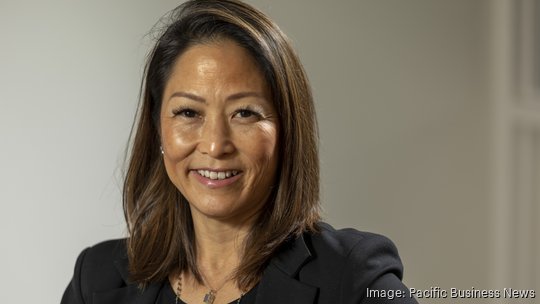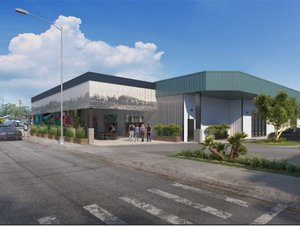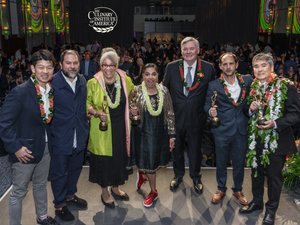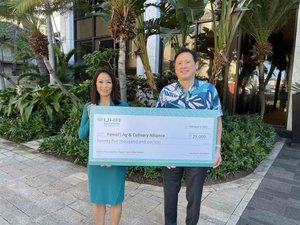
The Hawaii Food & Wine Festival, hosted by the Hawaii Ag & Culinary Alliance, is getting ready for another season of festival activities in October and November. Since its start in 2011, the festival has raised nearly $3.5 million to benefit local organizations focused on culinary and agricultural education.
The beneficiaries of this year's event will be announced at the Mahalo Reception in May and will include aina-based community organizations and Hawaii culinary schools, which provide hundreds of student volunteers each year.
"What began as a three-day festival in Waikiki has expanded to a three-weekend epicurean experience that spans three islands each fall — making it the largest food festival in Hawaii and the premier culinary destination event in the Pacific," said Denise Yamaguchi, the CEO and co-founder of the Hawaii Food & Wine Festival, in an email to PBN.
Today, the event includes 150 world-renowned chefs, sommeliers and mixologists, she said.
"Unlike other food festivals across the country, HFWF challenges participating chefs to use at least one locally grown, raised or caught ingredient in their dish, connecting Hawaii’s farmers, ranchers and fishermen to thousands of attendees each year," Yamaguchi said.
This year, the festival will take place Oct. 13-15 on Maui, Oct. 20 on Hawaii Island and Nov. 2-5 on Oahu.
Why did you start the Hawaii Food & Wine Festival? Hawaii Food & Wine Festival was created 12 years ago to promote sustainability and food security in our islands. The goal, initially, was to highlight our local ingredients and feature our farmers, ranchers and fishermen who ensure that we have access to the amazing food here in our islands today. Over time, the festival has grown to become a platform that supports the visitor industry by putting a spotlight on Hawaii as a culinary destination, while also supporting many other industries including education, culinary, agriculture, seafood, entertainment, arts and culture, beverage, media, etc.
As the next culinary movement in the state of Hawaii that followed the Hawaii Regional Cuisine movement, HFWF also provides an opportunity for media exposure for our young chef, sommelier and mixologist talent. In terms of impact in the community, the festival has really become an opportunity to showcase to the world the best of what Hawaii has to offer — our natural beauty, culture, music, food and beverage, and most importantly, our people.
What trends are you noticing in agriculture right now? There has been a strong interest by the younger generation in agriculture fueled by education and the need for greater sustainability and food security. Farming is hard work, but when you introduce technology to agriculture and show students how farming can also be about science, technology, engineering, coding, etc., students show much more interest in agriculture. Ag-tech is definitely a trend, not only in Hawaii, but around the world. Greenhouses — such as the ones on Lanai — vertical farming, controlled environment agriculture, aquaculture, etc. is trending right now because of the efficiencies and greater control these technologies offer.
What advice would you give to Hawaii’s farmers and entrepreneurs? In order for farmers to make money, they have to compete not just locally but globally. This means thinking about creating or growing products that can provide a high value or perceived high value. Mamaki tea, for instance, is a high-value crop and sells on average for $10-15 per ounce. To create perceived value, farmers or entrepreneurs need to know how to market and brand their products. For example, the Kula onion, which has been trademarked, can sell for a much higher price than a local onion.
Another way to create value is to develop a consumer packaged good, or value-added product, like taro chips, which sell for a much higher price per ounce than raw taro. Our From Cottage Industry to Commercial Enterprise program with Leeward Community College is designed to support value-added entrepreneurs using locally grown, raised or caught ingredients in their food products. Value-added products can increase the demand and production of local agriculture and in turn diversify our economy and create greater food security and sustainability.
For more information on the next HFWF, go to hawaiifoodandwinefestival.com.






